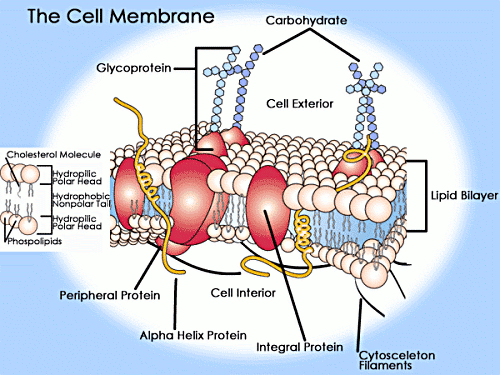Suggestions
Use up and down arrows to review and enter to select.Please wait while we process your payment
If you don't see it, please check your spam folder. Sometimes it can end up there.
If you don't see it, please check your spam folder. Sometimes it can end up there.
Please wait while we process your payment

By signing up you agree to our terms and privacy policy.
Don’t have an account? Subscribe now
Create Your Account
Sign up for your FREE 7-day trial
Already have an account? Log in
Your Email
Choose Your Plan
Individual
Group Discount
Save over 50% with a SparkNotes PLUS Annual Plan!
 payment page
payment page
Purchasing SparkNotes PLUS for a group?
Get Annual Plans at a discount when you buy 2 or more!
Price
$24.99 $18.74 /subscription + tax
Subtotal $37.48 + tax
Save 25% on 2-49 accounts
Save 30% on 50-99 accounts
Want 100 or more? Contact us for a customized plan.
 payment page
payment page
Your Plan
Payment Details
Payment Summary
SparkNotes Plus
You'll be billed after your free trial ends.
7-Day Free Trial
Not Applicable
Renews May 3, 2024 April 26, 2024
Discounts (applied to next billing)
DUE NOW
US $0.00
SNPLUSROCKS20 | 20% Discount
This is not a valid promo code.
Discount Code (one code per order)
SparkNotes PLUS Annual Plan - Group Discount
Qty: 00
SparkNotes Plus subscription is $4.99/month or $24.99/year as selected above. The free trial period is the first 7 days of your subscription. TO CANCEL YOUR SUBSCRIPTION AND AVOID BEING CHARGED, YOU MUST CANCEL BEFORE THE END OF THE FREE TRIAL PERIOD. You may cancel your subscription on your Subscription and Billing page or contact Customer Support at custserv@bn.com. Your subscription will continue automatically once the free trial period is over. Free trial is available to new customers only.
Choose Your Plan
For the next 7 days, you'll have access to awesome PLUS stuff like AP English test prep, No Fear Shakespeare translations and audio, a note-taking tool, personalized dashboard, & much more!
You’ve successfully purchased a group discount. Your group members can use the joining link below to redeem their group membership. You'll also receive an email with the link.
Members will be prompted to log in or create an account to redeem their group membership.
Thanks for creating a SparkNotes account! Continue to start your free trial.
We're sorry, we could not create your account. SparkNotes PLUS is not available in your country. See what countries we’re in.
There was an error creating your account. Please check your payment details and try again.
Please wait while we process your payment

Your PLUS subscription has expired
Please wait while we process your payment
Please wait while we process your payment

In addition to the lipid bilayer, the cell membrane also contains a number of proteins. We have already mentioned the presence of certain proteins in the cell membrane. In this section we will discuss the different classes of proteins found there. While the lipid bilayer provides the structure for the cell membrane, membrane proteins allow for many of the interactions that occur between cells. As we discussed in the previous section, membrane proteins are free to move within the lipid bilayer as a result of its fluidity. Although this is true for most proteins, they can also be confined to certain areas of the bilayer with enzymes. Membrane proteins perform various functions, and this diversity is reflected in the significantly different types of proteins associated with the lipid bilayer.
Proteins are generally broken down into the smaller classifications of integral proteins, peripheral proteins, and lipid-bound proteins.
Integral proteins are embedded within the lipid bilayer. They cannot easily be removed from the cell membrane without the use of harsh detergents that destroy the lipid bilayer. Integral proteins float rather freely within the bilayer, much like oceans in the sea. In addition, integral proteins are usually transmembrane proteins, extending through the lipid bilayer so that one end contacts the interior of the cell and the other touches the exterior. The stretch of the integral protein within the hydrophobic interior of the bilayer is also hydrophobic, made up of non-polar amino acids. Like the lipid bilayer, the exposed ends of the integral protein are hydrophilic.

When a protein crosses the lipid bilayer it adopts an alpha-helical configuration. Transmembrane proteins can either cross the lipid bilayer one or multiple times. The former are referred to as single-pass proteins and the later as multi-pass proteins. As a result of their structure, transmembrane proteins are the only class of proteins that can perform functions both inside and outside of the cell.
Peripheral proteins are attached to the exterior of the lipid bilayer. They are easily separable from the lipid bilayer, able to be removed without harming the bilayer in any way. Peripheral proteins are less mobile within the lipid bilayer.
Lipid-bound proteins are located entirely within the boundaries of the lipid bilayer.
The protein and lipid cell membrane is covered with a layer of carbohydrate chains on its outer surface. This layer is called a cell coat or glycocalyx. The exact composition and distribution of these chains is very diverse. The chains are thought to provide the cell with protection against damage. Glycocalyx are only found on the surface of the cells of higher organism's.

Please wait while we process your payment

